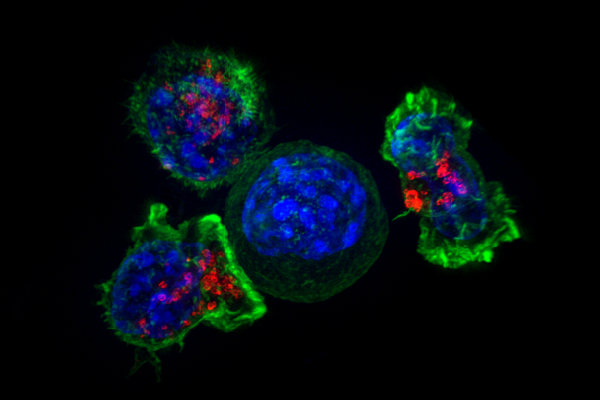New class of small molecule drug, SI-2, has potential for improving cancer treatment

Cancer cells communicate with their environment through cell molecules that pass on signals to the inside of the cell. The signals help cancer cells multiply and migrate, spreading the disease. One strategy to fight cancer is with drugs that block the cell molecules that pass on the signals that lead to cancer growth. But cancer cells can quickly adapt to this tactic by ramping up the production of the blocked molecules. Baylor College of Medicine researchers are fighting cancer with a different approach. Instead of blocking messenger molecules, they accelerate their destruction. Their results, published today in the Proceedings of the National Academy of Sciences, have the potential for improving cancer treatment.
"We studied a molecule called the steroid receptor coactivator 3 (SRC-3), which is also amplified in breast cancer 1 (AIB1). It plays an important role in breast cancer, but also in lung, ovary, prostate and pancreatic cancer," said Dr. Jin Wang, assistant professor of pharmacology, a CPRIT scholar in cancer research at Baylor and one of the two senior authors of this report. "For years it's been known that eliminating SRC-3 from cancer cells results in the cells slowing down their proliferation and migration. We wanted to target SRC-3 because it regulates not one but many signaling pathways inside cancer cells."
Researchers focused on finding small molecules that could easily enter the cancer cells and target SRC-3. To find these molecules, Wang and colleagues developed a lab test to screen large number of compounds for their ability to target SRC-3. They discovered SI-1 and then chemically modified it to increase its potency. The result was SI-2.
"We don't know exactly how SI-2 works. However, we know that it binds to SRC-3 and somehow triggers its degradation," said Wang. "We discovered that the more SI-2 we added to cancer cells, the less SRC-3 protein they had. In our experiments, cancer cells eventually died because they could not produce enough SRC-3 to maintain their growth."
Wang and colleagues also showed that SI-2 can inhibit tumor growth in a mouse model of breast cancer. In this animal model, SI-2 caused minimal toxicity to the heart. The researchers did not detect any toxicity to the liver, spleen, kidney, lung and stomach.
"SI-2 is the next step in a long effort to develop drugs against a key group of oncogenic drivers of many cancers, the SRC-family of coactivators. The paper reveals novel compounds with good efficacy against cancers and low toxicity for normal cells and animals," said Dr. Bert W. O'Malley, the Thomas C. Thompson professor and chair of molecular and cellular biology at Baylor and the other senior author of this report.
"This research has the potential to improve cancer treatment either alone or in combination with other current therapies," said Wang.
The researchers anticipate that this research will also inspire the development of more drugs that target other cancer coactivators and hope this will lead to improved cancer treatments.
More information: Xianzhou Song, et al. Development of potent small-molecule inhibitors to drug the undruggable steroid receptor coactivator-3 PNAS 2016 ; published ahead of print April 15, 2016, DOI: 10.1073/pnas.1604274113














